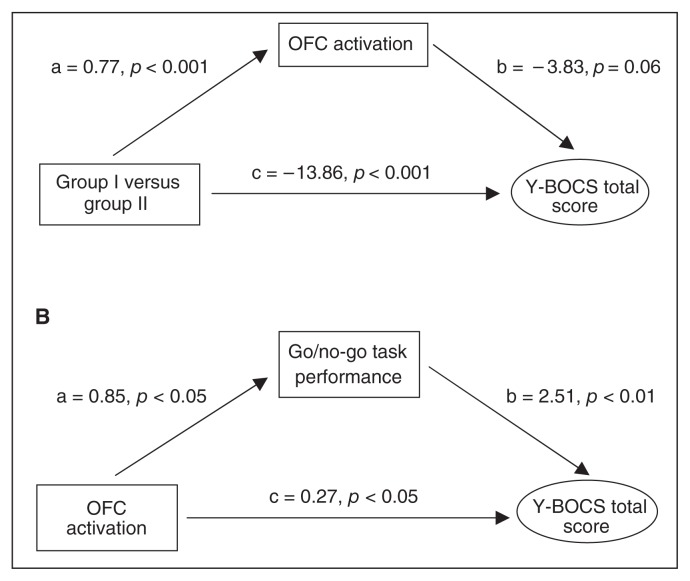Fig. 2.
Mediation analyses. (A) A posteriori analysis exploring a mediating effect of orbitofrontal cortex (OFC) activation on the association between antipsychotic treatment and obsessive–compulsive symptom (OCS) severity. Path a represents the effect of treatment with second-generation antipsychotics (SGA) on OFC activation, whereas path b represents the effect of OFC activation on symptom severity, partialling out the effect of SGA treatment. In addition to a direct effect of group affiliation on OCS severity (path c), statistically significant and trend results of both paths a and b indicate an indirect effect of OFC activation on this association. All of these paths are quantified with unstandardized regression coefficients. (B) Analysis exploring a mediating effect of performance in the go/no-go task on the association between OFC activation and OCS severity. Analysis did not reveal a significant direct effect of OFC activation (c), but the statistically significant results of both paths a and b indicate an indirect effect through cognitive performance in the inhibitory control task on OCS severity. All of the paths are quantified with unstandardized regression coefficients. Group I = clozapine/olanzapine; group II = amisulrpide/aripiprazole, Y-BOCS = Yale–Brown Obsessive–Compulsive Scale.

